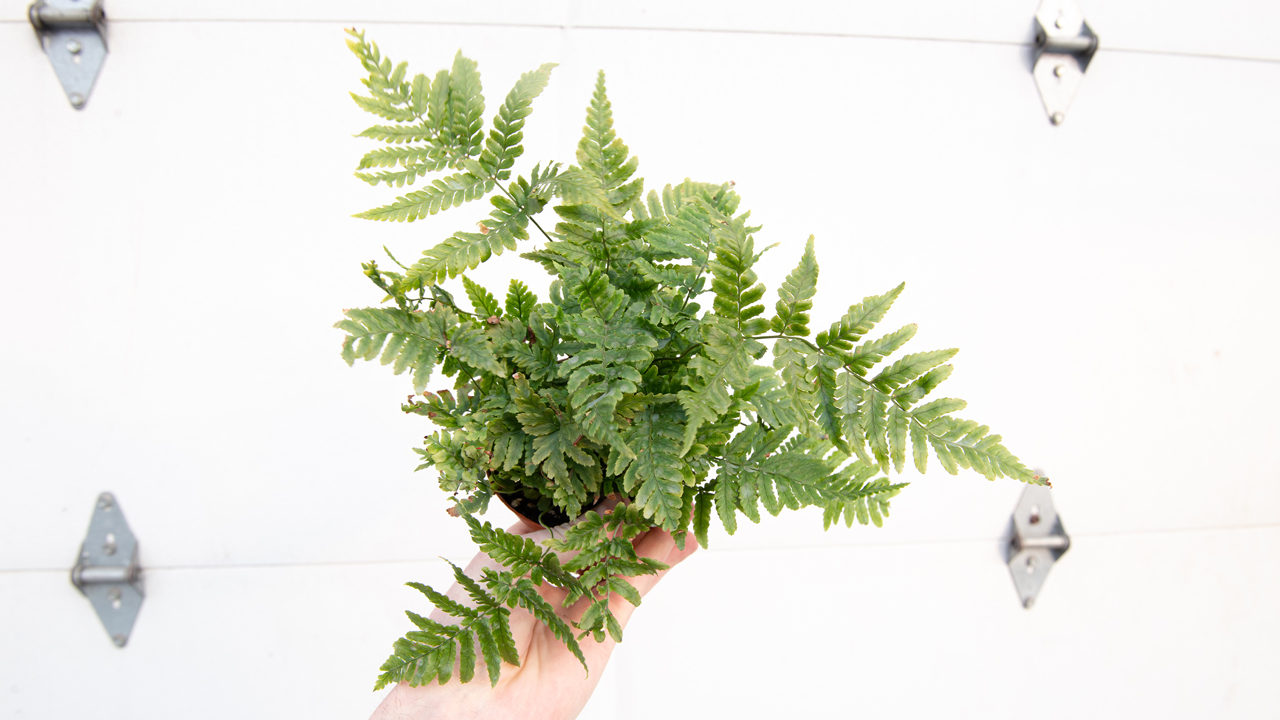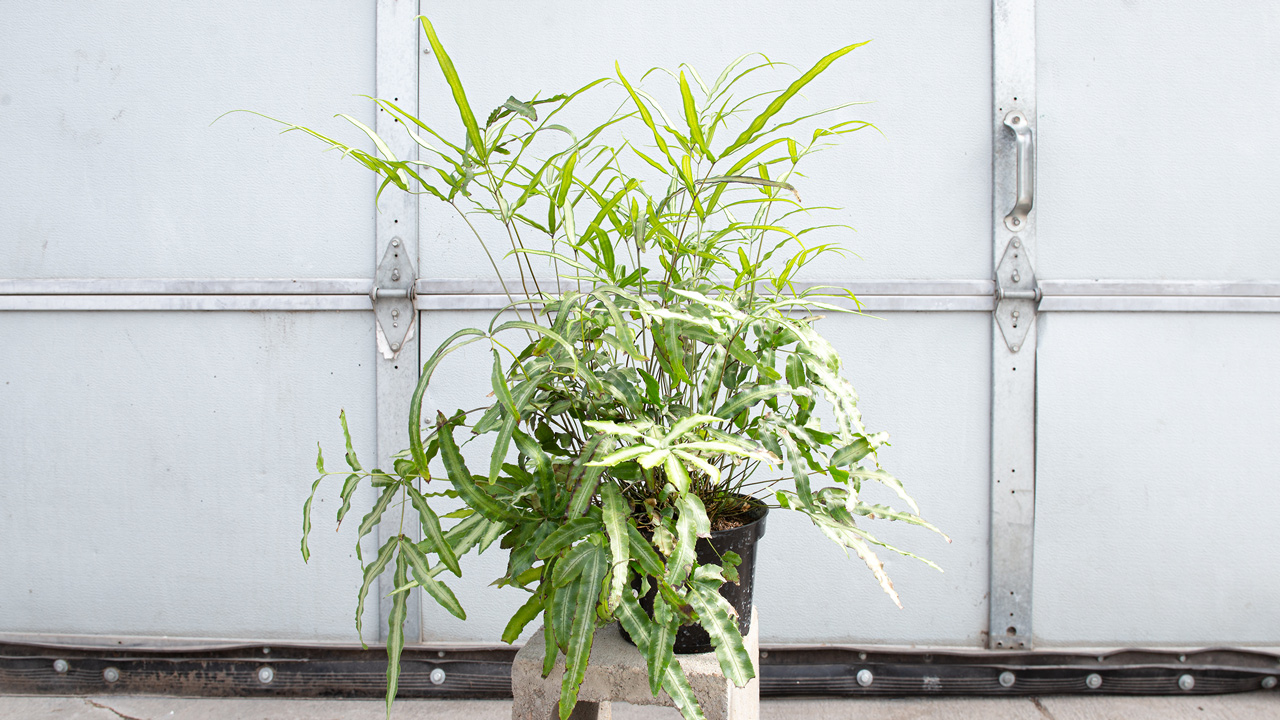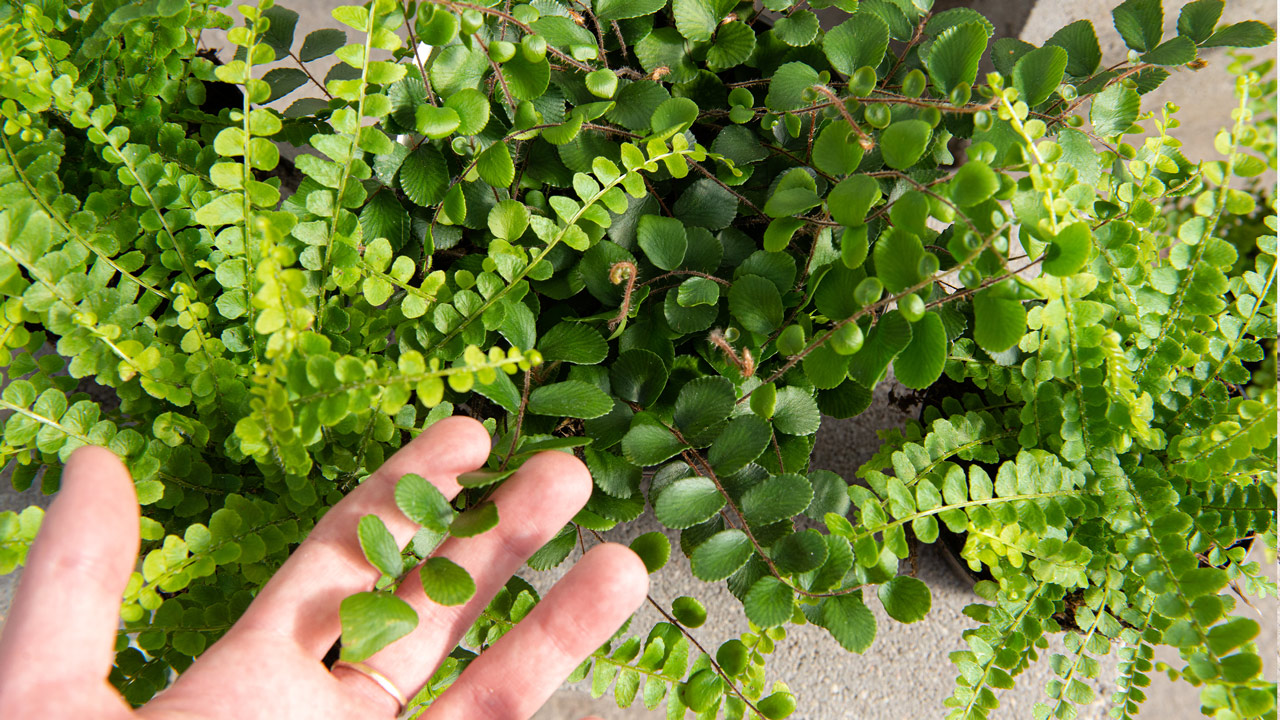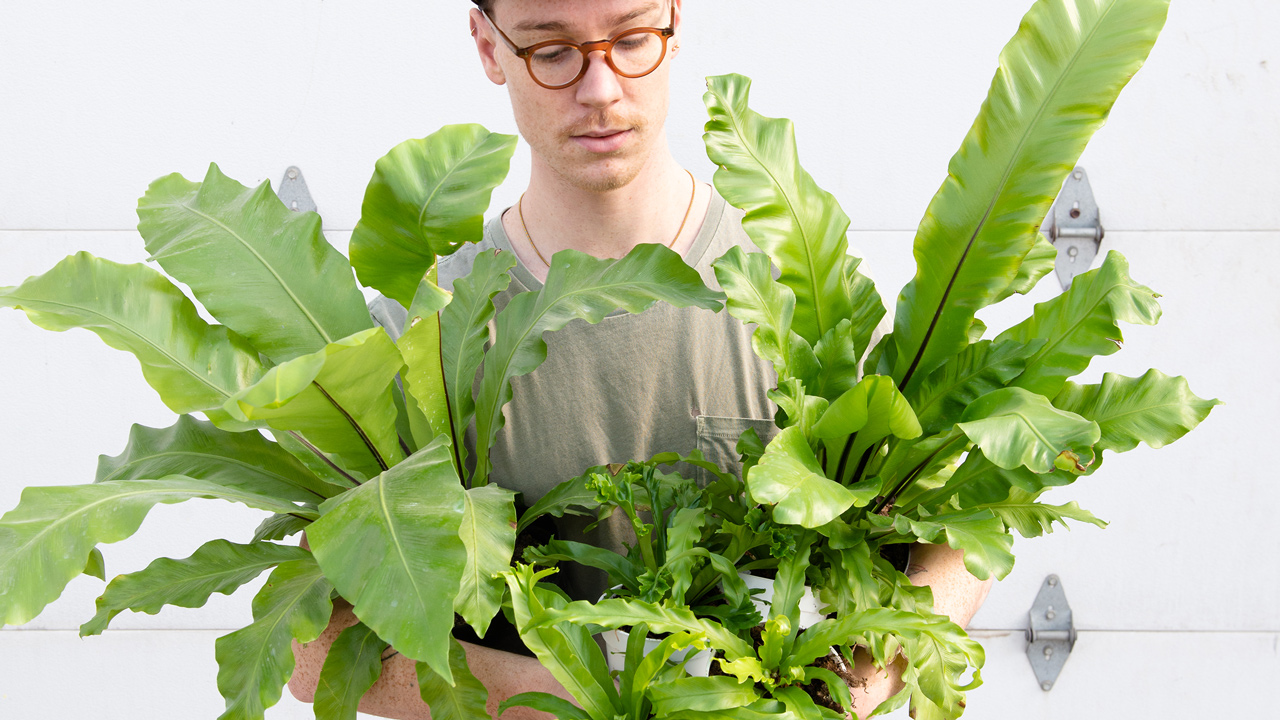
Ferns are an intriguing group of plants, spanning a wide variety of forms, colors, and origins. Their intricate foliage and growth habits bring eye-catching texture to any collection. Here we’ve identified ferns that represent each of the most common forms you’ll find in the Greenhouse. And we share about their care requirements, which – in typical fern fashion – can vary a bit too.
What Makes a Fern a Fern?
Ferns are an ancient group of non-flowering plants, which makes them truly unique. They originated over 300 million years ago, long before the appearance of flowers. One of a fern’s defining characteristics is that it reproduces by spores rather than seeds. Botanically speaking, a spore is a single cell, produced asexually, that can generate an entirely new plant by itself.
While spores may look like just dust to our eyes, under high magnification each spore is exquisitely detailed with defining textures and features – something like a fingerprint – that can even be used to differentiate between two closely related species.
In many ferns, spores are produced in small clusters called sori, which can be seen on the undersides of the foliage, arranged in different patterns depending on the type of fern. From the sori, spores are released by the millions and fly away on air currents to find new places to grow.

The “Classic” Fern
If you were to ask someone what a fern looks like, chances are they’d describe something with broad, triangular fronds dissected into lots of smaller leaflets. The Asplenium hybrid ‘Austral Gem’ is a perfect example. Its low-mounding, triangular fronds arch gently away from the container and are made up of many deeply lobed leaflets. This intricate dissection in the foliage inspires the term “feathery” which is often used to describe ‘Austral Gem’ and others like it. Boston, Kimberly queen, Australian tree fern, and ‘Autumn’ fern fall into this category as well.
Care: As ferns go, these classic varieties are some of the most tolerant to the cooler, drier environment found in our homes. They prefer lots of bright, indirect light and consistently damp – but not soggy – soil. For a beginning fern collector, this group is a good place to start.

Pteris Ferns
Pteris is a genus of ferns that look quite a bit different than a classic fern. The word pteris is often used as the common name for the group too – “brake” fern is another. Their foliage is typically divided into just a few long, ribbon-like leaflets arranged into three-fingered forms that might remind you of a turkey footprint. Pteris ferns also grow more upright and rise taller above their containers than classic, rounded ferns.
Care: Although relatively easy to care for, pteris ferns tend to ask for more consistent soil moisture and a little more humidity than ferns like ‘Austral Gem’. Given that, they’re still among the easiest ferns for beginning collectors to grow.

Ferns With Feet
Another group of ferns with a distinct character are commonly called the rabbit’s foot and kangaroo paw ferns. These types of ferns hold some of their furry-looking brown or white rhizomes above the soil surface. The rhizomes then appear to “creep” over the edge of the container and hang down at various lengths. This unusual feature definitely attracts attention. Above the rhizomes, the low-growing foliage may be typically fern-like or long and ribbony, depending on the type of fern.
Care: As is true of most houseplant ferns, kangaroo and rabbit’s foot ferns like bright, indirect light and consistent soil moisture, but they’re more tolerant of our cooler, less humid indoor environments.


Button Ferns
As you might guess from the common name, the leaflets on a button-type fern are small, rounded, and scattered along the frond. One species of button fern, Pellaea rotundifolia, is rather short and low-growing with dark green foliage. Another comes from a completely different genus – Nephrolepsis – and stands upright with a bright chartreuse color.
Care: Another in the “great for new plant parents” category, button ferns are typically easy to care for, only requiring bright, indirect indoor light and relatively consistent soil moisture.

Wide-Leaf Ferns
Then there are ferns that forego the dissected look all together and look like a typical wide-leafed houseplant. The most popular example is Asplenium nidus – the bird’s nest fern. On this fern, long, flat, and rippled fronds rise up tall from a central point before gently arching over.
Care: Like most ferns, bird’s nest ferns enjoy bright, indirect light and consistently hydrated soil, but they can tolerate short periods of slight dryness too. They’ll also tolerate the low humidity often found indoors.

Ferns With Shields
Staghorn ferns from the genus Platycerium are prized for their intriguing structure that includes not just one, but two types of fronds. The strap-like foliar fronds, which produce the spores, are upright and arching with a lobed, antler-like end. And at the base of the plant, the basal fronds form brown, overlapping plates that protect the root system and help this natural epiphyte stick to its growing surface. Platycerium bifurcatum is the species you’ll often see in the Greenhouse with its long, foliar fronds and silvery-blue coloring. ‘Netherlands’ is another cultivar of this species but grows shorter and more compact than the straight P. bifurcatum.
Care: Care varies a little depending on how the plant is grown – whether it’s attached to a board, planted in a hanging basket, or in a container with soil. No matter which method you choose, the light should be bright and indirect, and the soil needs a chance to dry out just a bit before a thorough drench.


The Maidenhairs
The collection of ferns we commonly call maidenhairs share a few common characteristics including dark, wiry leaf stalks and delicate – almost translucent – papery leaflets. True maidenhair ferns comprise some popular species and cultivars in the genus Adiantum and include the “classic” maidenhair fern, A. raddianum, the silver dollar fern, A. peruvianum, and A. microphyllum ‘Little Lady’ with its much tinier leaflets. Similar, but not a true maidenhair, the heartleaf fern, Hemionitis arifolia, shares the same papery foliage and wiry stem structure, so it often gets included in the crew.
Care: Simply stated, maidenhair ferns are challenging for most plant collectors. They absolutely require consistently moist – but not soggy – soil moisture. They also need bright – but never direct – light and more humidity than is found in a typical home. In other words, maidenhair ferns are perfect for those who like to tinker with their plants daily. But it’s all worth it because they’re just that pretty.
Find Your Fern
Ferns are wonderful, textural, beautiful houseplants, and – except maybe the maidenhairs – are much easier to care for than you might think. Come check out the fern table in the Greenhouse and see what you think – we promise you’ll find something to love among those varied and unusual fronds.


